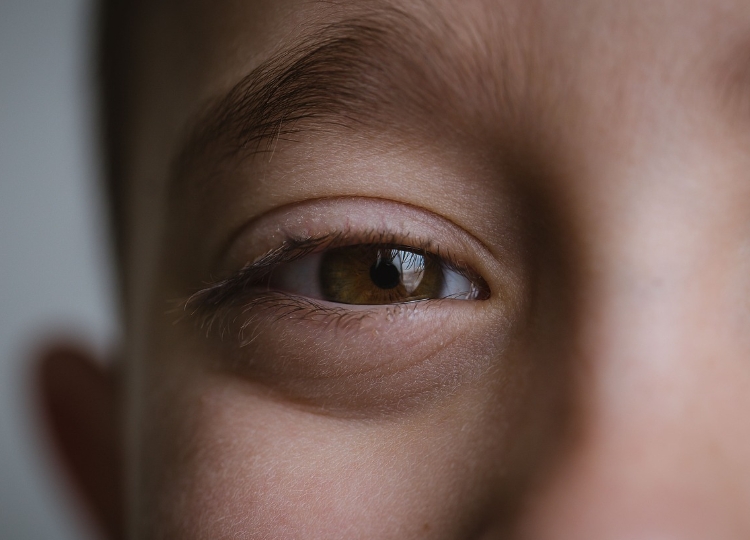
Do you have hair growing between your eyebrows, creating the appearance of a single, continuous brow? If so, you’re experiencing what’s commonly known as a unibrow, a feature that many individuals possess. In most cases, the hair on the forehead is relatively fine, making it easy for people to distinguish between their individual eyebrows.
However, for some individuals, the hair in this area is thick and coarse, resulting in a prominent unibrow. While some choose to embrace and confidently display their unibrow, others may wish to remove it entirely for personal or aesthetic reasons.
A unibrow can often become a focal point, sometimes leading to negative attention that can impact your self-esteem. Therefore, let's explore effective methods to eliminate a unibrow.
Contents:
Part 1: What Leads to a Unibrow?

A unibrow is typically characterized as a continuous band of hair that spans from one temple to the other, crossing over the bridge of the nose. This natural hair growth connects the two eyebrows and varies significantly among individuals.
You may wonder why not everyone develops a unibrow if it is a natural occurrence. The primary factors contributing to the presence of a unibrow include the following:
Genetic Inheritance:
The leading cause of a unibrow can be traced back to genetics. Research has shown that specific genetic markers associated with the PAX3 gene significantly influence the likelihood of unibrow development.
Approximately 8,500 DNA markers, including 50 variants found on chromosome 2 near PAX3, can lead to the formation of a unibrow. Thus, if your parents had a unibrow, chances are you may inherit the trait as well.
Furthermore, genetic transmission often correlates with ethnicity, making unibrows more prevalent in certain regions, such as Tajikistan.
Hormonal Influences:
While genetics play a pivotal role in unibrow formation, hormonal imbalances particularly linked to conditions like hirsutism can also contribute to this phenomenon. Elevated testosterone levels, external steroid use, and certain steroid medications may lead to excessive hair growth not limited to just the eyebrows but affecting the entire face and body.
Idiopathic Factors:
In some instances, the development of a unibrow may not be attributed to genetics or hormonal factors. This unexplained occurrence might result in hair that is not particularly thick. Additionally, incorrect hair removal techniques can inadvertently accentuate the appearance of a unibrow.
Indicator of a Rare Condition:
Scientifically referred to as Synopsys, a unibrow can occasionally signify an underlying genetic disorder, such as Cornelia de Lange syndrome. This rare congenital condition is associated with growth, neurological, and physical challenges, originating from mutations in certain genes.
Part 2: How to Eliminate a Unibrow?
The techniques you use to remove unwanted body and facial hair can also be applied to address a unibrow. Below, we categorize these methods into three distinct groups to help you identify the most suitable approach for your needs.
Temporary Solutions for Unibrow Removal
Here are some temporary methods to manage unibrow hair:
Trimming:
The simplest and quickest method is trimming. This involves cutting the unwanted hair on the glabella, similar to how one would shape their eyebrows. You’ll only need a pair of small scissors for this task.
First, outline the area you wish to trim, ensuring symmetry between the two eyebrows. Then, using a comb, brush the unibrow hair in the direction it grows before cutting it with the scissors. This method is particularly effective for individuals with coarse hair.
However, regular maintenance is necessary, and it may not provide the cleanest appearance. For a more polished look, consider using a shaving razor.
Threading:
Another option is threading, which can be challenging to perform on your own, especially for a unibrow. Therefore, during your eyebrow grooming appointment, you might ask your aesthetician to thread the unibrow as well.
Although threading can be moderately painful, it is a quick procedure, lasting up to a month, and results in a clean, well-defined look.
Tweezing:
Tweezing, or plucking, is the most precise method for addressing a unibrow. Regardless of the thickness or texture of your hair, a pair of tweezers can effectively help you remove it. For recommendations, check out the top 10 tweezers available.
With a mirror and a pair of sharp tweezers, carefully identify the area you wish to remove hair from, and pluck each hair individually in the direction of its growth. Typically, results from tweezing last between 3 to 6 weeks, though this method can be time-consuming and may irritate the skin.
Waxing:
Waxing presents a swift and longer-lasting solution for unibrow management. You can utilize hard wax, warm wax, or wax strips for this procedure.
To wax the unibrow, apply the wax in accordance with the hair growth direction, tauten your skin with one hand, and swiftly remove the wax strip with the other. This method efficiently removes the majority of hair in one motion, although shorter hairs may require tweezing afterward. While waxing provides longer-lasting results and often results in finer regrowth, it may not be suitable for sensitive skin types.
Semi-Long-lasting Methods for Unibrow Removal
While temporary hair removal methods are accessible and easy to perform, they require frequent repetition as hair will regrow. Below are several options that






































